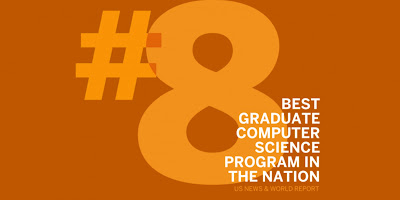 |
| MCC ca. 2005. Photo courtesy Larry D. Moore, CC BY 4.0 license |
Note: this is an expanded version of an article originally written for Northwest Austin Civic Association (NWACA).
As the cliché goes, unless you've been living under a rock, you
know Artificial Intelligence (AI) is all the rage. Major players like Microsoft
and Google are investing big money in AI “chatbots” (AKA "stochastic parrots" by some researchers; see Bender et.al. 2021) like ChatGPT and Bard to
enhance their search engines. In this article we step back in time and look at some history of AI in Austin.
While popular media makes the current round of chatbots synonymous with AI, AI
has been around for years; the term “Artificial intelligence” was coined by computing
pioneers in 1956 (Moor 2006).
In the nearly 70 years since, AI research has involved more than just neural
nets, the underpinnings of the current products like ChatGPT. What is
considered AI is ever changing; a program that plays checkers certainly
wouldn’t rate prime time news coverage these days but was once considered AI.
The history of AI is one of booms and busts. We are now in what AI researchers colloquially call the “third AI summer,” a boom time in AI research. The first two booms were followed by “AI winters” (the busts), periods when expectations exceeded results, or hardware evolution or economics failed to meet the demands of AI, leading to a decrease in interest, funding, and research.
The second big boom in AI might be said to have hit Austin in 1983 with the founding of the Microelectronics and Computer Technology Corporation (MCC). MCC was a consortium of companies helped along by the Department of Defense and the Justice Department as a response to Japan's Fifth Generation Computer Systems project, which was announced in 1982. Japan's Fifth Generation project utilized Prolog, a logic programming language popular in AI but second in popularity in the United States to the language Lisp. Japan’s Fifth Generation project was to AI like Russia’s Sputnik was to space exploration: a wake-up call that the United States was at risk of falling behind in a new technology. The iconic MCC building still stands today as the University of Texas West J.J. Pickle Research Building at the southwest corner of the intersection of MoPac and West Braker Lane.
While both the Fifth Generation project and MCC were causalities in part due to the second AI winter in the early 1990s, MCC is credited with helping jump-start Austin as a high-tech center. One of MCC’s spin-offs was a company called Cycorp which still does AI research headquartered in Austin. They’ve been working on AI for nearly four decades.
Cycorp’s product is Cyc, the name a play on “encyclopedia,” intending to create an encyclopedia of common-sense knowledge about the world. From their website, Cycorp is a “leading provider of Machine Reasoning AI. The Cyc platform combines an unparalleled common-sense ontology and knowledge base with a powerful reasoning engine and natural language interfaces...”.
Besides MCC and Cycorp, Austin has been home to a number of contributors to AI at the University of Texas and at companies like Schlumberger and Texas Instruments. Schlumberger’s Austin office is now closed, but the facility remains as Concordia University’s campus off FM 620. The Texas Instruments Explorer Lisp computer lost out to standard Unix machines in the second AI winter, victim to lower cost technology.
Will the current summer of AI be followed by a winter? Time will
tell. Old AI never dies, it just morphs into other technology. Some feel the
current neural net-based AI will eventually need to incorporate other
techniques (“symbolic AI”) from the first two AI booms. If so, companies like
Cycorp with roots going back to the 1980s may be well positioned to help. And the University of Texas graduate program in Computer Science, ranking #8 in the U.S. in AI, will ensure Austin stays in the AI game.
 | |
| Carton history of AI (Kautz, 2020). As this Tom and Jerry cartoon illustrates, neural nets weren't always the vanguard of AI. Click to enlarge. |

No comments:
Post a Comment